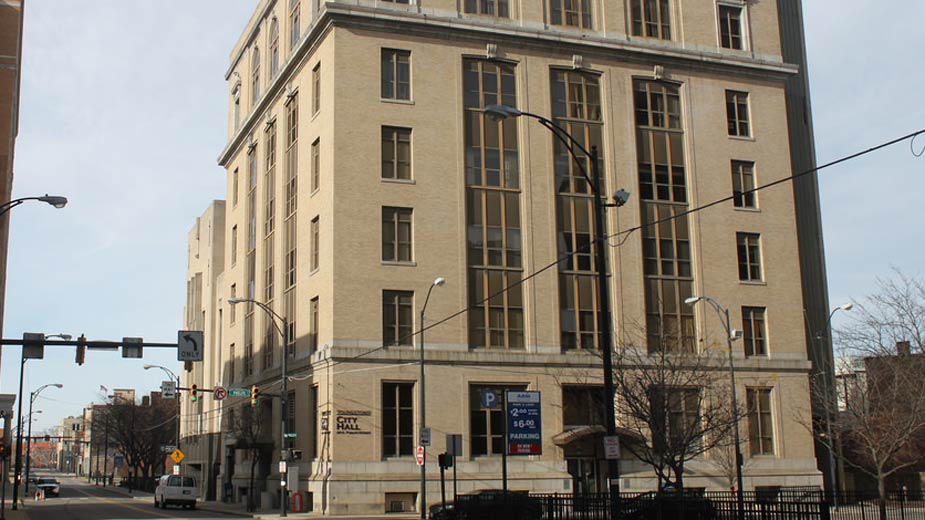Youngstown Thermal Gets Chance to Pitch City Council
YOUNGSTOWN, Ohio — City Council’s building and grounds committee has tabled a measure that would give the go-ahead for a Middleburg Heights company to provide heating services to four municipal buildings that are now being supplied by Youngstown Thermal.
The committee heard a presentation Thursday from representatives of Brewer-Garrett Co. that outlined the company’s plan to revamp the city’s energy service, a plan they say would save the city more than $3.2 million over 15 years.
After an initial $1.83 million investment for the new system, the city would still be ahead $1.39 million over the 15-year period, said James Wilbanks, senior energy engineer at Brewer-Garrett.
“That is a guaranteed number,” he told committee members. “We are not going to come back to the city and ask for more money.”
The committee opted to table the measure because it wanted to hear a counter proposal from Youngstown Thermal before moving the legislation forward.
Brewer-Garrett plans to replace the remaining steam-heat service at 20 Federal Place with all electric power, Wilbanks said. He noted that the building is already mostly served by electric heat.
Another part of the project calls for construction of two boiler plants – one to serve hot water heat to City Hall and the police department building and another to serve the downtown fire station, he said.
“What really helped this is the ability to put in a single boiler plant to handle the steam load of the entire facility,” he said of the City Hall/police project. “That boiler plant will offer additional capacity, redundancy, everything that’s necessary for a turnkey solution,” Wilbanks said.
Brewer-Garrett also proposes to install a small, localized boiler plant that will provide hot water heat directly to the fire station, which Wilbanks said is much more efficient than the current system.
“We take steam completely out of the building and we’re going to 100% to heating hot water,” he noted.
A fourth project Brewer-Garrett proposes is to “retro-commission” the Covelli Centre’s systems, including upgrading its LED lighting capacity. Other LED lighting would be installed inside and outside of 20 Federal Place.
He said the operational costs to maintain the entire project would be about $14,853 annually, but the total project would allow the city to realize $181,311 in savings each year compared to the current steam system.
Construction would normally take between six to eight months, and Wilbanks said the company could adapt to the client’s schedules. Once the project is finished, Brewer-Garrett will guarantee the costs and savings presented in the proposal, reinforced by annual audits that he said would validate the numbers.
“We’re ready to start now,” Wilbanks said. “Once it’s approved, we’ll be ready to go.”
Carl Avers, CEO of Youngstown Thermal, said that delivering heat through electricity – based on what 20 Federal Place uses now — costs about $26 per million British Thermal Units, or BTUs, while steam-generated heat is $14 per million BTUs.
“I don’t see where the savings exist,” he told the committee. “I don’t know how you get savings when electricity is more costly than steam.”
Avers, whose company stands to lose business from the deal, said he earlier presented the city with a proposal that shows savings of $2.5 million through his system. He said the four buildings being under consideration for the new system represent about 4% of his total business.
In July, Youngstown Thermal’s contract with its largest customer, Youngstown State University, expired. YSU opted to build and operate its own boiler system rather than purchase steam from the company. YSU, Avers noted, represented about 60% of Youngstown Thermal’s business.
Avers said he’s still in discussions with YSU, and he noted that customers in other parts of the country where Youngstown Thermal operates have found it difficult to manage their own system and have come back to use district heating services.
City Finance Director David Bozanich said the city went through the traditional RFP process and weighed proposals from both companies. He said the administration recommended Brewer-Garrett because the plan allows for more flexibility and is a reliable source of energy — especially to the city’s safety forces.
“One of the primary forces driving this is the reliability,” Bozanich said. “We are required to provide police, fire, 911 and certain services that are absolutely important to this community. We feel that this enhances that reliability.”
Still, committee members were unwilling to recommend the measure for City Council’s consideration until they heard a formal pitch from Avers and Youngstown Thermal.
Seventh Ward Councilwoman Basia Adamczak suggested the plan be placed on hold until Youngstown Thermal can make a presentation before the committee. “I would feel more comfortable, just to make a more informed decision,” she said.
Third Ward Councilman Nathanial Pinkard agreed. “I would prefer the administration come to us with both proposals so we could have a comparison,” he said. “I think that’s being fair.”
Avers said he would be willing to make a presentation before the committee in the coming weeks. “We support the LED portion of their proposal,” he said. However, he believes that using district steam heat is much more cost efficient than electric-based heating.
“The economics are not being presented correctly,” Avers said. “It’s that simple.”
Copyright 2024 The Business Journal, Youngstown, Ohio.



